Unusual and monumental buildings of the ancient world. A short history of their construction, visualizations of their supposed appearance, and the present state. See some of the most important monuments of the ancient era. Map of the 7 Wonders of the Ancient World.
7 Wonders of the Ancient World
Originally, the list of the ancient wonders of the world was compiled in the 2nd century BC. by Antipater of Sidon. The list was supposed to be a kind of a guide to popular tourist destinations at the time. Mainly there are masterpieces of Greek architecture. Its composition was established later in ancient times. As many as 5 out of 7 objects on the list are the works of the Greek civilization. This testifies to the rapid development of the ancient world in the fifth and fourth centuries B.C.E. At the very bottom there is a map with all the places marked. The order of the buildings from the youngest to the oldest.
1. Faros Lighthouse
This extraordinary building is the youngest of the 7 Wonders of the Ancient World. The lighthouse was erected on the island of Faros in the Mediterranean Sea, right at the entrance to the port of Alexandria. Perhaps the originator of its construction was Alexander the Great himself. The building was about 120 meters high and was built sometime between 280 and 247 BC. At that time, it was probably the tallest structure in the world, right after the Egyptian pyramids. Probably she must have made a great impression on the sailors entering the Alexandrian port. On its top there was a small, symbolic statue of the Greek god of the seas - Poseidon. As a result of several earthquakes, the building was destroyed. Its final fall dates back to the 15th century. Today, the medieval Fort Qaitbay is built on the site of the former lighthouse.
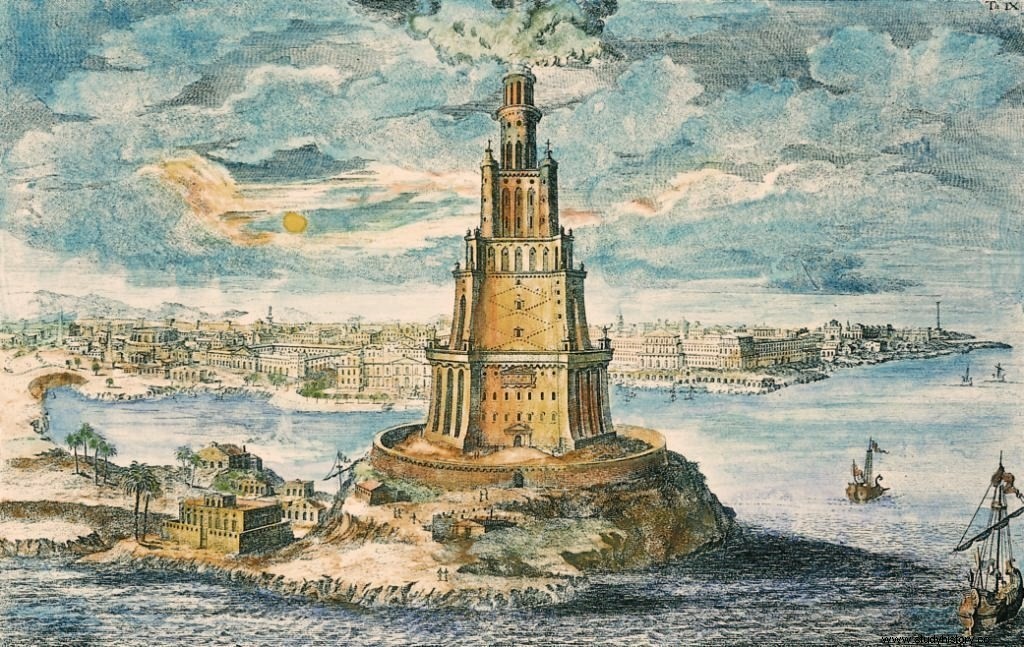
Faros Lighthouse - 7 Wonders of the Ancient World - Visualization from the 18th century

Fort Qaitbay on the site of the former lighthouse - Photo:Delengar Source:commons.wikimedia.org
2. Colossus of Rhodes
The Colossus of Rhodes is a huge statue of the Greek sun god - Helios. It was set at the entrance to the port of Rhodes, on the Greek island of the same name - Rhodes, located in the Aegean Sea. The statue of Helios was about 30 meters high, which made it one of the largest statues of the ancient world. Its creation dates back to the years 292-280 BCE. The Colossus was built to commemorate the defeat of Demetrius I's army, which besieged the island. Its surface was to be covered with bronze and iron plates melted down from weapons left by Demetrius' troops. The Colossus of Rhodes was destroyed after several decades, during the earthquake in 226 BCE. The oracle in Delphi advised against its reconstruction, so the fallen statue of Helios lay for many years, becoming an attraction in itself. Eventually, after 800 years, his remains were sold by the Arabs to a Jewish merchant from Emessa. Currently, at the entrance to the port, there are island fortifications. However, the idea of rebuilding this extraordinary monument appeared last year.

Colossus of Rhodes - 7 Wonders of the Ancient World
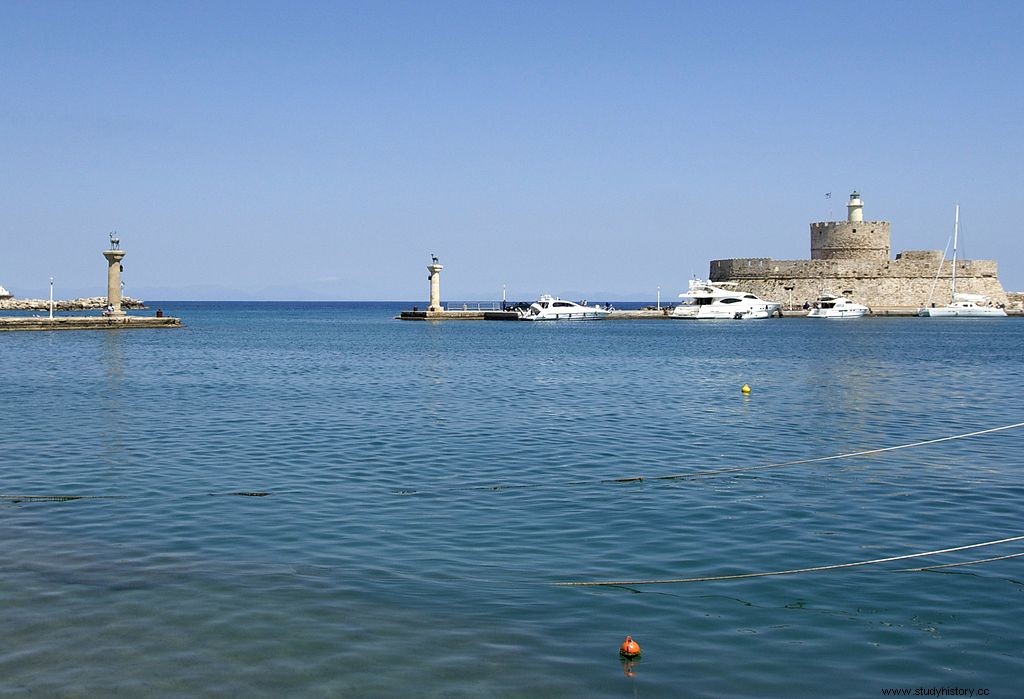
Contemporary port entrance and island fortifications - Photo:Jebulon Source:commons.wikimedia.org
3. The Mausoleum at Halicarnassus
This remarkable tomb was erected for Mausolus, the Persian satrap of Caria. The coincidence of the ruler's name with the adopted name of "mausoleum", which describes the type of tomb, is not accidental. It was his name that was later used to call monumental tomb buildings. The mausoleum was built around 350 BC. The building was quite large, as it was about 45 meters high. The upper part is decorated with a colonnade, and at the top of the mausoleum there is a pyramid from the stairs with a quadriga on it. Like many other structures of this type in the region, this one also had to contend with devastating earthquakes and wars. In the end, only a pile of scattered stones remained of the monumental mausoleum. The memory of him, however, has stood the test of time. The Mausoleum at Halicarnassus has inspired many new contemporary buildings. Especially for US government institutions.

Mausoleum in Halicarnassus - 7 Wonders of the Ancient World - Visualization from the 19th century.
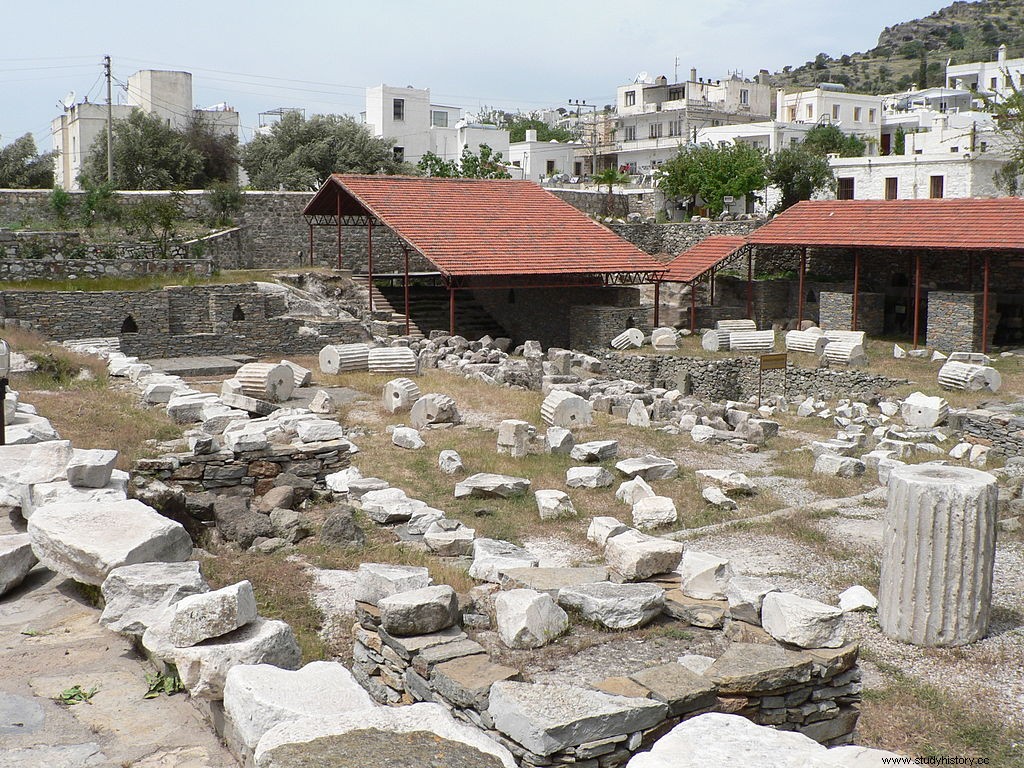
View of the contemporary remains of the mausoleum, today in Bodrum, Turkey - Photo:Patrickneil Source:commons.wikimedia.org
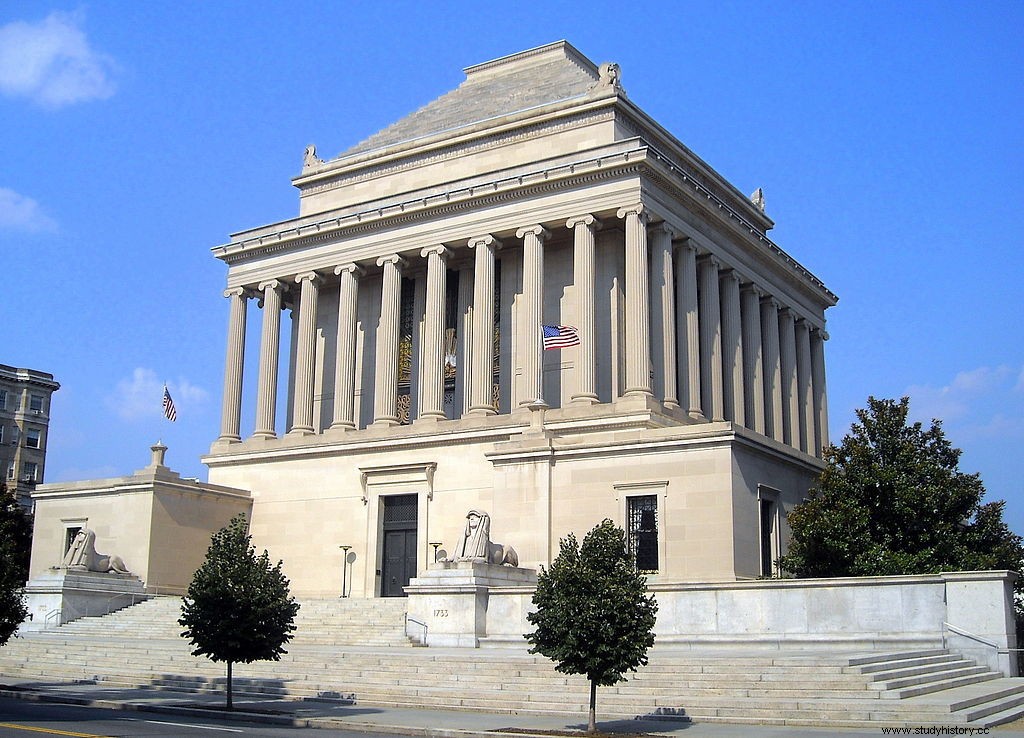
House of the Temple building in Washington, modeled on the mausoleum in Halicarnassus - Photo:AgnosticPreachersKid at English Wikipedia
4. Statue of Zeus at Olympia
A huge, for those times, statue of the Greek god Zeus was erected in the temple of Zeus in Olympia. Zeus, seated on the throne, was about 12-13 meters high. Its creation is attributed to the Greek sculptor Phidias and dates to around 435 BCE. The statue of Zeus was to be decorated with gold, precious stones and ivory. In his right hand, Zeus held the statue of the victory goddess Nike, and in his left hand was a staff with an eagle at the top. The statue survived for almost 900 years, when in 425 or 475 CE it was it was consumed by fire. Today, only the ruins of a temple erected in his honor can be found in the presumed place of his location.
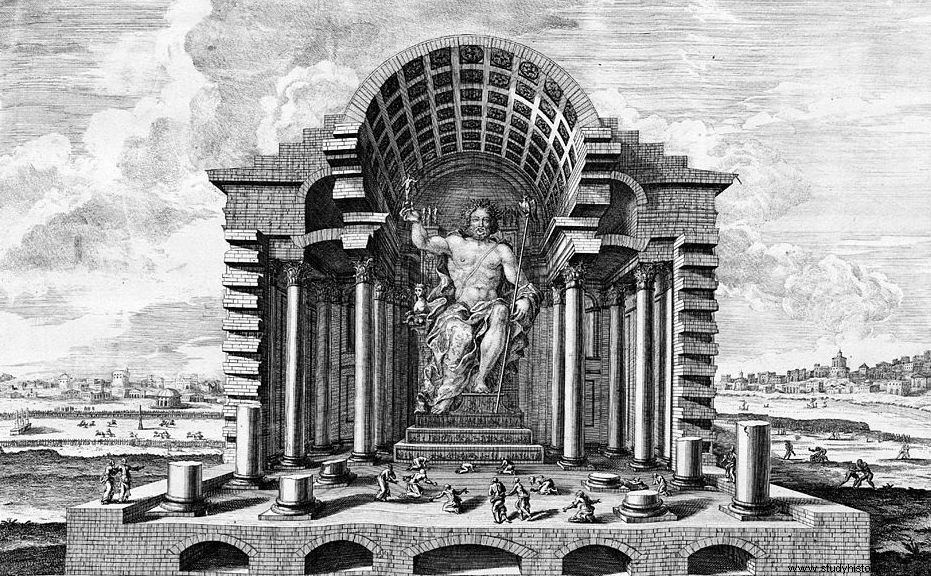
Statue of Zeus at Olympia - 7 Wonders of the Ancient World - Visualization from the 18th century.

Presumptive location of the statue - Photo:Alun Salt Source:flickr.com
5. Temple of Artemis in Ephesus
Greek temple dedicated to the goddess of hunting and animals Artemis, whose statue was supposed to be in the center of the building. From her name, the temple is also called the Artemision. The building was erected around 550 BC. at the behest of King Croesus, ruler of Lydia. Most likely, it replaced another temple that had been destroyed earlier. Artemision was built on a rectangular plan, one side of which was about 115 meters, the other 50 meters long. The whole was surrounded by a colonnade several meters high. The building was destroyed several times. Her fame was so great that the Macedonian king Alexander the Great was involved in the reconstruction of the temple. The rebuilt temple lasted another 600 years, when in 226 CE it was finally destroyed during the Goth invasion. Since then, only rubble has remained.

Temple of Artemis in Ephesus - 7 Wonders of the Ancient World - Visualization from the 19th century.

A place of ruins next to the city of Selçuk in Turkey - Photo:Adam Carr at the English language Wikipedia
6. The Hanging Gardens of Babylon in Babylon
The Hanging Gardens of Queen Babylon were to be erected in ancient Babylon at the behest of King Nebuchadnezzar II. Their formation is estimated somewhere between 605 and 562 BCE. I am writing "were supposed to stay" because the question of their existence is still debatable. The location of the gardens is only supposed and has never been conclusively confirmed. Despite this, there are several accounts from the ancient world about the existence of gardens, which aroused admiration and admiration. The gardens of Babylon consisted of special multi-story terraces with luxuriantly growing vegetation. The structure was irrigated with waters from the Euphrates River. According to the account of Nebuchadnezzar II, he was to create a Garden of Eden in the dry climate of Babylon for his wife Amytis. Their destruction is as mysterious as their rise. It is assumed that they finally ceased to exist in the 1st century AD.

Hanging Gardens of Babylon - 7 Wonders of the Ancient World - Visualization from the 19th century.

Another image of the Hanging Gardens of Babylon in Babylon - Visualization from the 18th century.
7. Great Pyramid of Cheops in Giza
The oldest of the 7 Wonders of the Ancient World and, most importantly, the only one that has survived to our times. The construction of the monumental Cheops Pyramid dates back to 2584-2561 BCE. The pyramid was intended for the tomb of Pharaoh Cheops. Currently, after losing the tip, the building is 138 meters high, originally it was 146 meters high. For over 3,800 years, it remained the tallest man-made structure. Together with the entire complex of pyramids and the Sphinx, it is a symbol of the ancient world and modern Egypt, becoming an attraction attracting crowds of tourists. Interesting fact, about the same time has passed between the construction of the oldest and the youngest of the wonders of the ancient world as between our modern bowls and the conquests of Alexander the Great. Lots of time.

Great Pyramid of Cheops in Giza - 7 Wonders of the Ancient World - Illustration from the 18th century

The Cheops pyramid in Giza - Photo:Nina at the Norwegian language Wikipedia
Map of the 7 Wonders of the Ancient World
